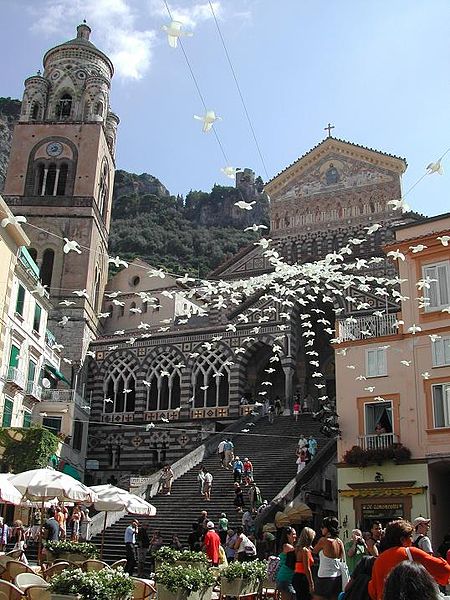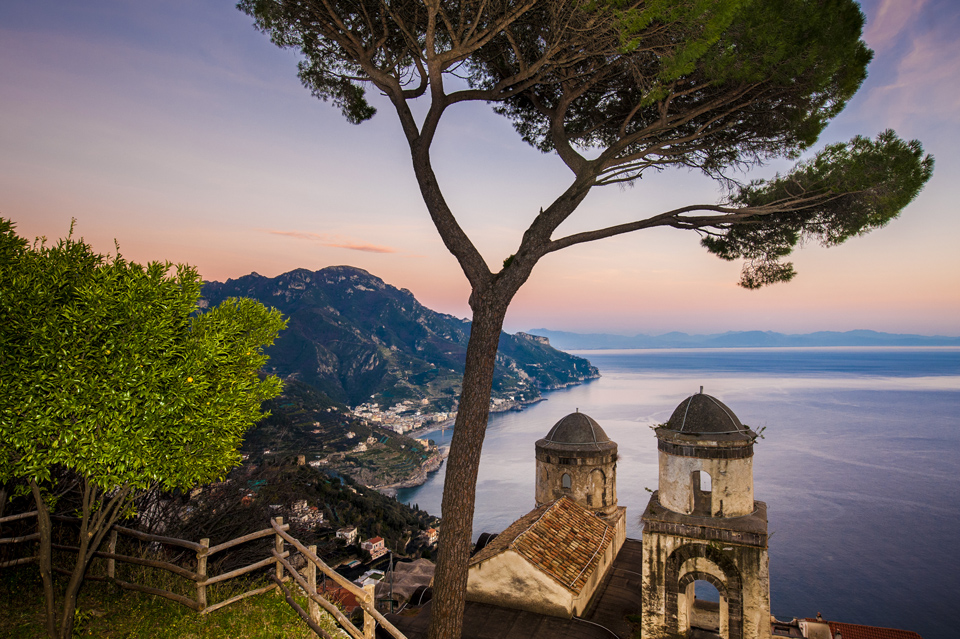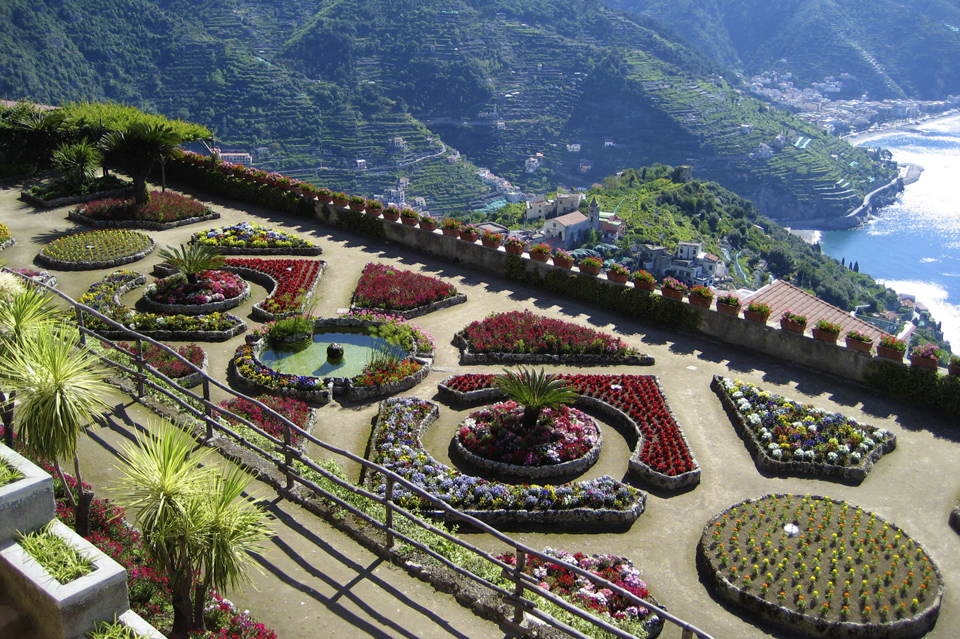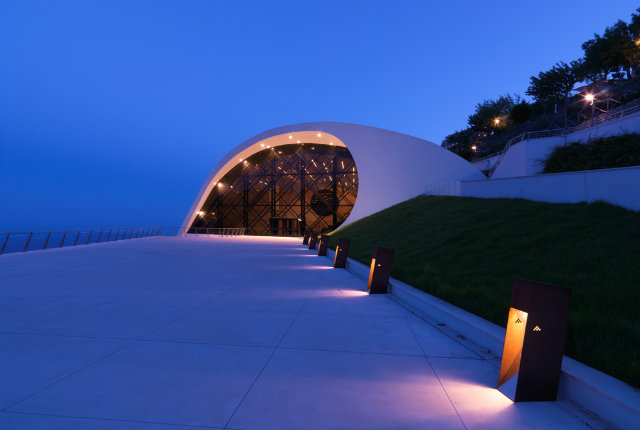Amalfi:
the most historically important city, which gives its name to the whole coastline. Its importance is related to the “Duchy of Amalfi”, a relatively large territory and influential that in the year 1000 a.C. gave way to the Maritime Republics, with Pisa, Venice and Genoa. Among the main things to visit, even just for a day trip, they are certainly:
The Cathedral, dedicated to St. Andrew, with its melted door to Constantinople and the statues on the main altar of Bernini, the “Paradise Cloister” with the Arsenals and the Paper Museum.
Along the road to Amalfi, and precisely in Conca dei Marini, do not miss the visit to the Emerald Cave.
Ravello:
 considered “City of Music” for the important festival dedicated to Richard Wagner, who was pleased by visiting the gardens of Villa Rufolo, to find a place that until then had existed only in his imagination, and he perfectly described by composing the text and the music in his last work, namely the magician Klingsor’s garden, and he wrote in the visitors book: “We found the garden of Klingsor”, not because they wanted or sought some reason for inspiration, but giving, in his self-centeredness brilliant, something he imagined existed already.
considered “City of Music” for the important festival dedicated to Richard Wagner, who was pleased by visiting the gardens of Villa Rufolo, to find a place that until then had existed only in his imagination, and he perfectly described by composing the text and the music in his last work, namely the magician Klingsor’s garden, and he wrote in the visitors book: “We found the garden of Klingsor”, not because they wanted or sought some reason for inspiration, but giving, in his self-centeredness brilliant, something he imagined existed already.
What to visit:
Villa Rufolo: set of buildings dating from the thirteenth and fourteenth centuries, with Islamic influences. It also contains an archaeological Antiquarium.
Villa Cimbrone: eclectic building, with reuse of ancient fragments. Celebrated its Belvedere.
Villa Episcopio: former bishop’s seat of the Duke of Sangro, stayed there the King Vittorio Emanuele III during the spring of 1944, when the government of Italy was established in Salerno. In it there was the signing of the governorship in favor of Umberto II.
“Camo” Museum of Coral: the considerable charm of the eighteenth century a snuffbox encrusted with cameos.
Auditorium Oscar Niemeyer: designed by the Brazilian architect Oscar Niemeyer, was inaugurated January 29, 2010.
Cathedral of Ravello: dating back to the eleventh century. In the seventeenth-century chapel is kept the vial of blood of the patron saint Pantaleone, which like San Gennaro, which presents the annual phenomenon of liquefaction. Note a mosaic-shaped Pistrice, sea monster mythology, also present on the church bell tower of Santa Maria Assunta of Positano.




